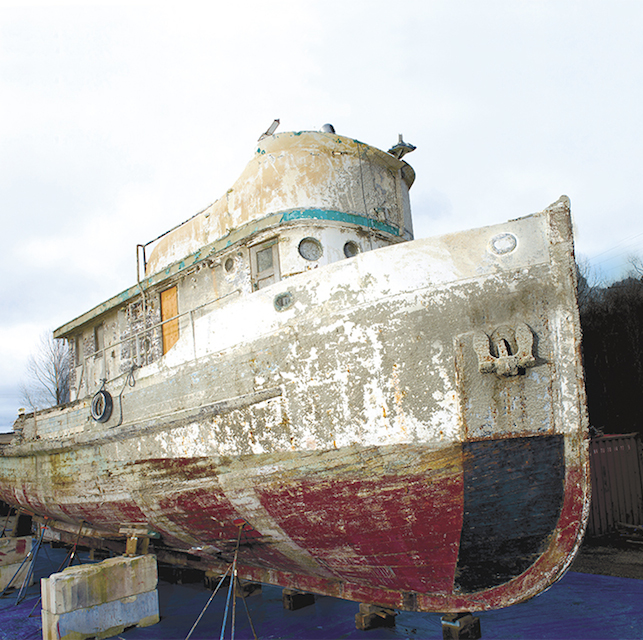Concerned ranchers and excited environmentalists have had a lot to talk about in the past month as long-standing plans to restore grizzly bear populations in the North Cascades have inched closer to action.
It’s been 40 years since grizzly bears were first listed as a threatened species, and more than two decades since 9,800 square miles of Washington’s North Cascades were named as a possible area for restoration efforts aimed at building a new, sustainable population of grizzlies. According to the National Park Service, that area could support up to 200 bears, though those numbers won’t be reached for decades—even in the best of circumstances. In the near future, reintroduction plans would see only a few bears returned to the area every few years.
But before the grizzlies can return, the program needs to get through the public-comment period, which closes on March 26.
Following the progress of a habitat-restoration project can be a bit like watching paint dry, but the topic of grizzly restoration has brought an interesting twist to the six public meetings, held across the state from Wenatchee to Bellingham, and mail-in and online comments: namely, that many people find grizzly bears absolutely terrifying.
“There is a lot of fear, in general, and concern, especially from people who don’t understand the species,” says Ann Froschauer, a public-affairs supervisor for the Washington Fish and Wildlife Office of the U.S. Fish and Wildlife Service. She provides information to those who are slightly nervous about these cuddly creatures, which can weigh up to 790 pounds and could function as a regulation-height basketball hoop if they stood on their hind legs and wore a rim as a hat. “It’s an issue that really does seem to attract polar-opposite camps. Some people are really excited. Others . . . are a bit more reserved,” she says.
The plan has drawn a wide range of opinions. On one side are ranchers concerned about their livestock and backpackers worried about their safety. On the other are wildlife advocates eager to bring the bears back to a place they once regularly lived, returning some of the 100,000 grizzlies who roamed the lower 48 before Lewis and Clark portaged across the country. Now those numbers are estimated at around 1,500. In Washington’s North Cascades, a grizzly bear has not been confirmed since 1996, though a 2010 sighting was later brought into question.
The fears of grizzly bears in the North Cascades are being fueled by the results of a similar program. Last August, a pack of wolves killed nearly 30 sheep in the northeastern part of the state. Like grizzly bears, wolves were once regulars in our mountains, but saw the population drop dramatically with westward expansion. Following a recovery plan, their numbers have rebounded—and with them, the number of attacks on livestock. Though the attacks aren’t yet regular, they have left some with concerns about intentionally introducing yet another big, hungry predator. “It’s one more endangered species that will ruin our lifestyle, custom, culture, and economic stability,” Okanogan County Commissioner Jim DeTro recently told The Capital Press.
To help curb those fears, the WDFW and NPS brought bear biologists and ecologists to many of the public meetings in an attempt to offer fair and unbiased information on grizzly behavior. “Being able to talk with people that have been working with bears for a long time about aspects of the bear’s behavior, like diet and movement, helps people be more informed about the animal and may help address some of those fears,” Froschauer says. “We’ve heard from a lot of people that have lived in grizzly country that have had great experiences.”
The information that Froschauer gathers as part of that conversation, along with that gathered by her partners at the NPS, will help inform an Environmental Impact Study (EIS) that examines possible restoration alternatives and the consequences of each of those plans. But overwhelmingly negative public opinion could slow the plan.
The plan is just one of many under consideration across the country, including areas in Idaho, Wyoming, and Montana. For now, those still concerned about the bear’s reintroduction don’t need to worry. It will be at least two more years before a final reintroduction plan could be presented. At that point, even if reintroduction is recommended, bears may not arrive for years. In fact, a similar recovery effort in Bitterroot, Mont., reached a consensus for reintroduction in 2000, but has since been growing stale due to lack of funding.
Even with a best-case scenario, the plan will be fairly mild and slow-moving. Bears would be brought into the Cascades a few at a time. “By introducing a small number of animals at a time, we allow them to acclimate and become self-sustaining,” says Froschauer. In other words, even for the most avid backpacker, it’s far more likely that seeing the results of this project will be a privilege of their grandchildren.
news@seattleweekly.com








